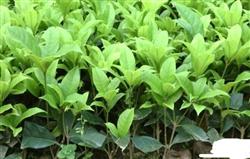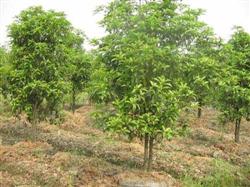Cuttage propagation method of osmanthus fragrans

It is necessary to choose the right time for cutting. The spring shoot of sweet-scented osmanthus stopped developing at the end of April and has become a strong branch of half-old and non-tender by the end of June. This kind of strong branch has the strongest vitality, and it is easier to survive when it is used for cutting. The optimum temperature for the growth of sweet-scented osmanthus is 25 ℃-28 ℃. When it exceeds 30 ℃, it grows slowly. Therefore, the cuttage in the lower reaches of the Yangtze River is better in the second half of June. It can also be carried out in autumn, but the survival rate is low, and special attention should be paid to cold prevention for the growth of new seedlings. Cutting is best carried out in the open field. Choose sandy loam in seedbed, not clayey soil. Ploughing and turning the soil in winter should be carried out in advance and fine soil preparation should be carried out in spring. The bed is 20 centimeters high, with the back of the adult tortoise and covered with grass to protect it from rain. It is best to put a large water tank in the bed and store water the day before watering, so as not to make a big difference between the water temperature and the soil temperature. The "heel insertion method" is generally adopted. Heel cutting is to cut a new branch with a little old branch at the lower end, which is like a heel. The heel is closely organized and has a lot of nutrients, which is easy to produce new roots. The cuttings are about 10 cm long, leaving an upper pair of leaves at the top and cutting off all the leaves below. The pair of leaves left cannot be damaged or cut small. The cuttings are inserted into the soil for 6m / 8cm and the surrounding soil is compacted with your fingers. The row spacing is 12 × 3 cm. After insertion, it must be carefully managed and watered thoroughly. It is best to spread a layer of crushed grass on the soil before watering, so as to avoid muddy leaves and prevent soil consolidation. Then use the Reed curtain to shade, otherwise it is not good for survival. Commonly used high and low double shade shed, not only no direct sunlight, but also breathable and ventilated. You should not water too much to prevent rotting roots. In dry and hot weather, spray water on the leaves two or three times a day. Generally, root nodules are born 1 month after insertion, and 2 months later, you can start to bask in the sun for 1 hour in the morning, and then cover the curtain. After that, the exposure time of the sun was gradually prolonged. The low shade canopy can not be built in October, so that the seedlings can get semi-scattered light from the high shade shed all day. At the end of November, the high shed was changed into a greenhouse to protect against cold, and the seedlings had to be covered with a thin layer of straw. Water is sprinkled once when the soil is white in winter and carried out at noon. After the second year of warm weather, sunny days should still be shaded, and 10% mature liquid fertilizer should be properly added to the watering. The height of the seedlings can reach 1 foot by the end of the second year. Transplant in spring in the third year.
- Prev

How to propagate Osmanthus fragrans by Cuttage
The nursery should choose sandy loam or light loam with good drainage. The soil is too sticky and should be properly mixed with sand to adjust the soil texture. In order to prevent the occurrence of blight and root rot, pesticides should be sprayed to disinfect the soil when making the bed. The bed should be high and the drainage must be unobstructed. Practice has proved that stagnant water after rain is the easiest to make.
- Next

Comprehensive Management of Orchid Diseases and insect pests in China
For orchids, the harm of rot is very serious and spreads rapidly. There are two kinds of orchid rot: soft rot and black rot. In the early stage of soft rot, tiny brown water stains appear on the leaves, and then expand into black moist patches. At this time, the disease spots are easy to rupture and smell.
Related
- Fuxing push coffee new agricultural production and marketing class: lack of small-scale processing plants
- Jujube rice field leisure farm deep ploughing Yilan for five years to create a space for organic food and play
- Nongyu Farm-A trial of organic papaya for brave women with advanced technology
- Four points for attention in the prevention and control of diseases and insect pests of edible fungi
- How to add nutrient solution to Edible Fungi
- Is there any good way to control edible fungus mites?
- Open Inoculation Technology of Edible Fungi
- Is there any clever way to use fertilizer for edible fungus in winter?
- What agents are used to kill the pathogens of edible fungi in the mushroom shed?
- Rapid drying of Edible Fungi

